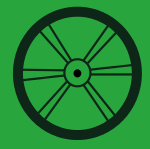Janata Dal
| Janata Dal | |
|---|---|
| जनता दल | |
 | |
| President (s) |
V. P. Singh, I. K. Gujral H. D. Deve Gowda |
| Founded | 11 October 1988 |
| Dissolved | 1999 |
| Merger of | Lok Dal, Congress (S), Jan Morcha |
| Succeeded by |
JD (S) JD (U) |
| Headquarters | New Dehli, N.D., India |
| National affiliation | National Front (1989-1991) |
| International affiliation | None |
| Colours | Green |
|
Politics of India Political parties Elections | |
Janata Dal was an Indian political party which was formed through the merger of Janata Party factions, the Lok Dal, Congress(S), and the Jan Morcha led by V. P. Singh on 11 October 1988 on the birth anniversary of Jayaprakash Narayan.
History
V.P. Singh's defection from the Congress (I) in 1987 enabled opposition factions from the Janata Party and Bharatiya Lok Dal to unite the Janata Dal in 1988. Regional parties, such as the Telugu Desam Party, the Dravida Munnetra Kazhagam, and the Asom Gana Parishad, together formed the National Front, led by Janata Dal, which defeated Rajiv Gandhi's Congress (I) in the 1989 parliamentary elections. With V.P. Singh as prime minister, the National Front government earned the appellation of "the crutch government" because it depended on the support of the Communist Party of India (Marxist) on its left and the BJP on the right.
BJP had initiated rath yatra to facilitate the construction of the Ramjanmabhumi Temple on the site of the Babri Masjid. The National Front government decided to end the yatra, and Janata Dal chief minister of Bihar, Lalu Prasad Yadav, arrested Advani on October 23, 1990. The BJP's withdrawal of support for the National Front government proved fatal, and V.P. Singh lost a parliamentary vote of confidence on November 7, 1990.
Two days before the vote, Chandra Shekhar, an ambitious Janata Dal rival who had been kept out of the National Front government, joined with Devi Lal, a former deputy prime minister under V.P. Singh, to form the Samajwadi Janata Party, with a total of sixty Lok Sabha members. The day after the collapse of the National Front government, Chandra Shekhar informed the President that by gaining the backing of the Congress (I) and its electoral allies he enjoyed the support of 280 members of the Lok Sabha, and he demanded the right to constitute a new government. Even though his rump party accounted for only one-ninth of the members of the Lok Sabha, Chandra Shekhar succeeded in forming a new minority Government and becoming Prime Minister (with Devi Lal as Deputy Prime Minister). However, Chandra Shekhar's government fell less than four months later, after the Congress (I) withdrew its support.
The Janata Dal and the Samajwadi Janata Party declined after the fall of the Chandra Shekhar government. The factional rivalry and ineffectiveness that impeded the National Front government's efforts to provide effective government tarnished the Janata Dal image. In the absence of strong national leadership, the party was rendered a confederation of ambitious regional leaders whose rivalry prevented the establishment of a united party organization.[1]
Ascent to power
It first came to power in 1989, after allegations of corruption, known as the Bofors scandal, caused Rajiv Gandhi's Congress (I) to lose the elections. The National Front coalition that was formed consisted of the Janata Dal and a few smaller parties in the government, and had outside support from the Left Front and the Bharatiya Janata Party. V. P. Singh was the Prime Minister. In November 1990, this coalition collapsed, and a new government headed by Chandra Shekhar under Samajwadi Janata Party (Rashtriya) which had the support of the Congress came to power for a short while.
Its second spell of power began in 1996, when the Janata Dal-led United Front coalition came to power, with outside support from the Congress under Sitaram Kesri, choosing H. D. Deve Gowda as their Prime Minister. The Congress withdrew their support in less than a year, hoping to gain power with the support of various United Front constituent groups, and I. K. Gujral became the next Prime Minister. His government too fell in a few months, and in February 1998, the Janata Dal-led coalition lost power to the Bharatiya Janata Party.
Janata Dal Factions
- Samajwadi Party
- Janata Dal (Secular)
- Janata Dal (United)
- Rashtriya Janata Dal
- Indian National Lok Dal
- Samajwadi Janata Party (Rashtriya)
- Biju Janata Dal
- Rashtriya Lok Dal
- Lok Janshakti Party
- Samata Party
- Socialist Janata (Democratic) Party (merged with Janata Dal (United))[2][3]
- Janata Party (merged with Bharatiya Janata Party)[4][5]
Proposed merger
Some leaders of Janata Parivar parties have proposed a merger.[6][7] Janata Dal (Secular) led by H.D. Deve Gowda, Janata Dal (United) led by Sharad Yadav and Nitish Kumar, Samajwadi Party led by Mulayam Singh Yadav, Rashtriya Janata Dal led by Laloo Prasad Yadav, Socialist Janata (Democratic) led by M.P. Veerendra Kumar are expected to join this merger.
References
- ↑ http://www.whatisindia.com/issues/rashjada/
- ↑ http://indiatoday.intoday.in/story/nitish-kumar-sjd-merger-jd-u-kerala-janata-parivar-veerendra-kumar/1/409352.html
- ↑ http://www.newindianexpress.com/states/kerala/SJD-Merges-with-Sharad-Yadavs-Janata-Dal-United/2014/12/29/article2593079.ece
- ↑ http://www.thehindu.com/news/national/swamy-merges-janata-party-with-bjp/article5013018.ece
- ↑ http://www.ndtv.com/india-news/subramanian-swamys-janata-party-merges-with-bharatiya-janata-party-531295
- ↑ http://zeenews.india.com/news/india/janata-parivar-merger-process-on-lalu-prasad-yadav_1539101.html
- ↑ http://www.ndtv.com/india-news/janata-parivar-merger-on-track-says-nitish-kumar-725347
| ||||||||
| ||||||||||||||
.jpg)
